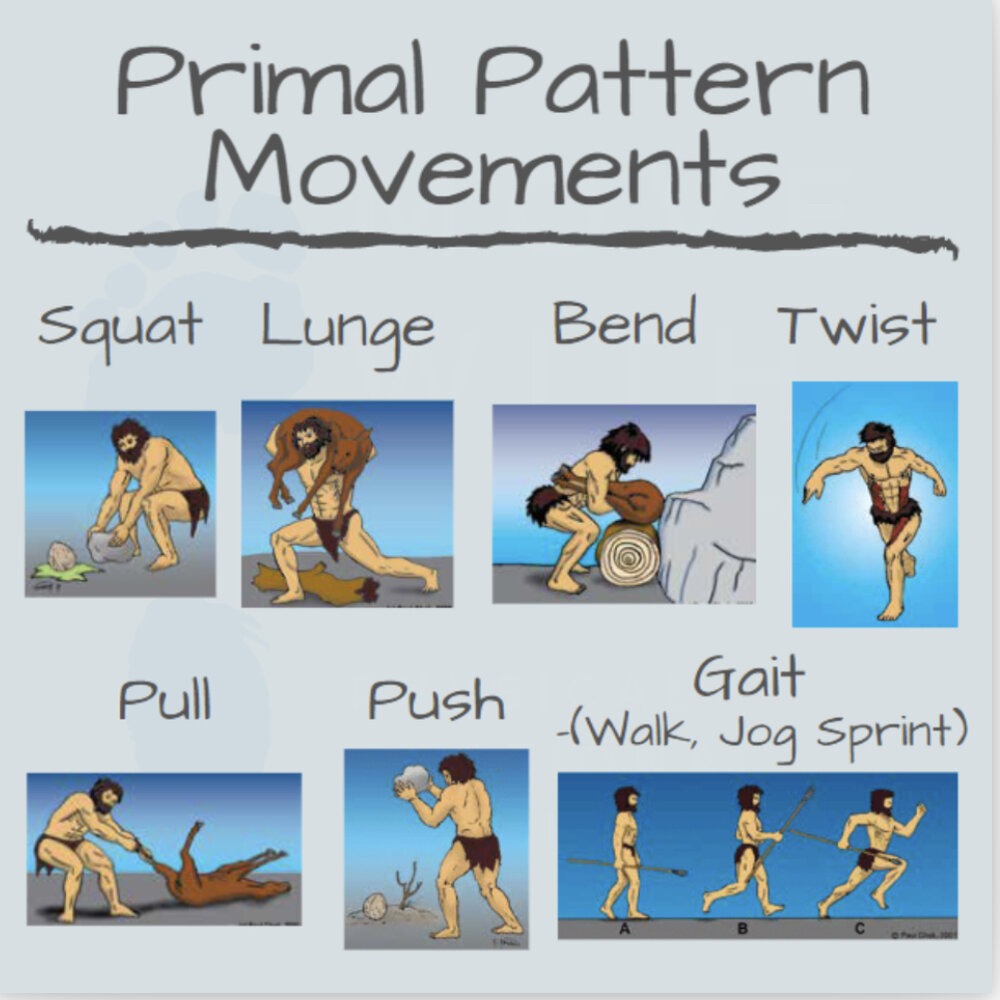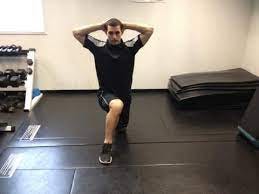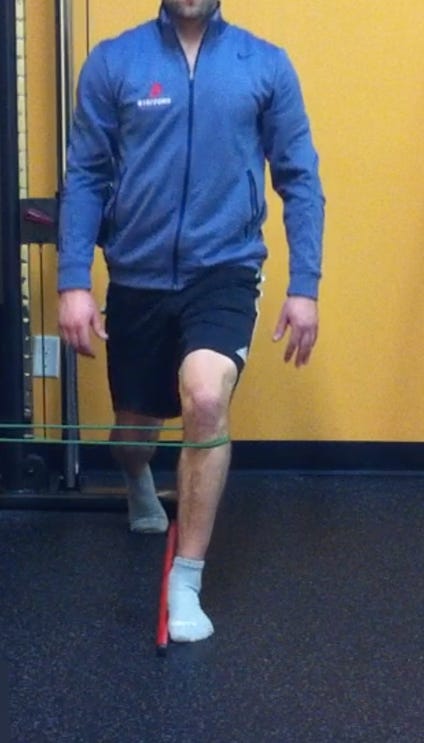
It is intriguing that skill acquisition emanates from constraints imposed upon us (i.e., environment) from within us (i.e., the organism) as well as the task itself (Clark, 1995). These concepts find their home within the dynamic pattern theory, accompanied by self-organization, patterns and stability. I’d like to explore the utility of these perspectives in reducing valgus collapse (i.e., caving knees during lunging and squatting patterns) in clients.

My colleague and I provided a presentation to a running group recently. A medical professional (Chiropractor) who was also in attendance posed a thought provoking question. He asked us if training individual muscles (i.e., vastus medialis and gluteus medius) would improve or decrease valgus collapse in people performing lunging and squatting patterns. I believe the degrees of freedom problem is an appropriate place to start in answering this question.

Pondering the degrees of freedom problem (Magill, 2011), how does the body manage multiple joints and muscles all at once, and in a harmonious and synchronized fashion? Does the body “see” just individual muscles? Coordinative structures (Magill, 2011) states that the body organizes and coordinates particular groups of muscles to achieve an action goal. In this case, perhaps isolating the gluteus medius to improve its contribution in the lunge and squat pattern would fall short, since many muscles contribute to the squatting and lunging patterns. The following will explore the dynamic pattern theory further.

Dynamic pattern theory holds within it the concept of constraints as mentioned previously. It is theorized that constraints guide and develop the behaviors we observe (Clark, 1995). It is also stated that if perturbations are variable enough, that stability will be challenged, and a new pattern will self-organize and emerge (Clark, 1995). Following this concept, I evoke perturbations upon a person while in squatting and lunging patterns (thereby abiding by the coordinative structures view). By imposing constraints that are appropriately variable, new or enhanced patterns emerge. Consider the following illustrations;

Pictures one and two show valgus collapse during the squatting and lunging patterns. In pics three and four (see below), the constraints come in the form of bands attached at the knee. The intent is to impose a valgus collapse variable enough, so that the person’s stability and attractor states shift because of an appropriate increase in the control parameter (i.e., increasing the force of the stretched band). If the person does not find an appropriate strategy, they fall. If they do find a strategy, they most often fix the valgus collapse and transition into a squat and lunge pattern devoid of valgus issues. The band-on-knee strategy comes from Gray Cook (Cook & Liggitt, 2007).

In conclusion, it would follow that training movement patterns instead of individual muscles elicits better results, supported by components of the dynamic pattern theory.
References
Clark, J. E. (1995). On Becoming Skillful: Patterns and constraints. Research Quarterly for Exercise and Sport, 66(3), 173-183.
Cook, G. (Producer) & Liggitt, P. (Director). (2007). Secrets of the hip and knee. Corporate Video Services.
Magill, R. A. (2011). Motor learning and control: Concepts and applications (9th ed.). New York: McGraw-Hill.
-Michael McIsaac
